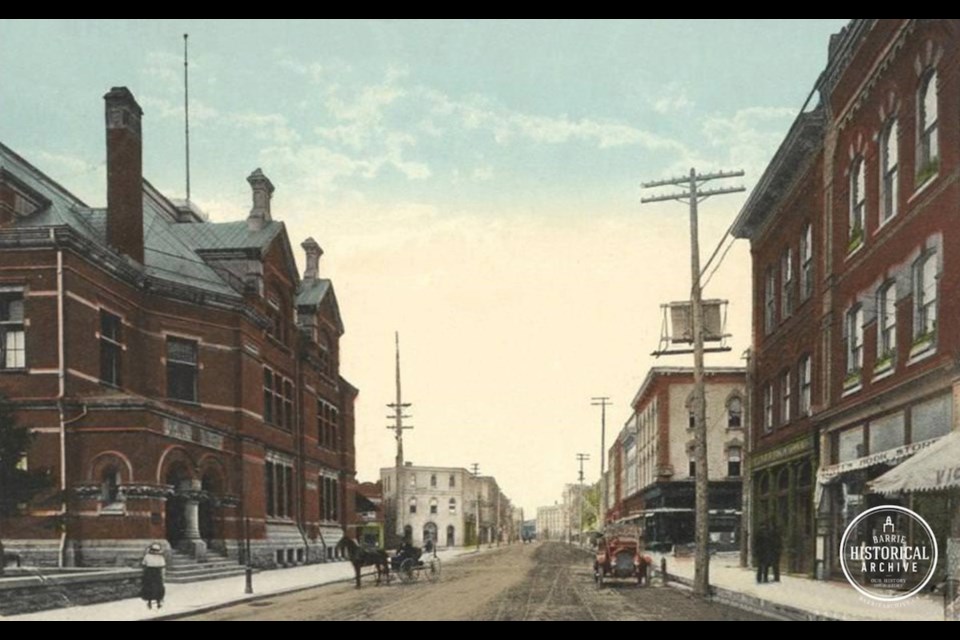“An automobile, or horseless carriage, attracted considerable attention in the streets on Tuesday. It was ridden, or driven, or both, by Mr. Eaton, son of T. Eaton, Toronto. Mr. Eaton took the Chief and several other citizens for a ride through the town. It is certainly a great step forward as a medium of travel. Time will simplify and perfect them and also reduce the price to a more reasonable figure than the $900 that this one was valued.”
The writer of that Northern Advance article from June 7, 1900 was right about the wonder of the automobile as a great advancement in transportation, but he would have been well shocked at the price of one in 2018! Time has not exactly simplified these vehicles either.
In that first report of automobiles in Barrie, he went on to say, “This is the second horseless carriage seen here this week. The other passed through town five days ago, and was drawn by a pair of mules.”
The automobile took off slowly in Barrie, and remained a novelty for quite a few years, appearing only now and then in the newspapers in blurbs about well off residents attending auto races in foreign places, or visits from far flung relatives who brought such a contraption along. They were still the stuff of opera shows, and of jokes which usually pointed to their reputation of breaking down.
Man: Doctor, would riding an automobile out into the countryside improve my health?
Doctor: Certainly. The five mile walk back into town would be very beneficial.
Motor car travel was believed to be a passing fad for quite some time, a sport, or something that the rich enjoyed for the time being. The few automobile owners in existence rarely piloted their own vehicles and employed the services of a chauffeur, who also acted as an auto mechanic for these mysterious and notoriously unreliable machines.
Anti-auto groups were formed in Ontario and were known to protest in Toronto, and to circulate petitions for presentation to Premier James Whitney. By 1905, some regulations were put in place to try and appease the agitators, and to make the fast-moving conveyances safer.
The speed limit for an auto was set at 15 miles an hour on the highway, and 10 within a town or village. The auto number plate must not be obscured by dust. Autos must approach a horse, going in any direction, at 7 miles per hour starting at 100 yards away from it. Racing was not permitted on highways. Each auto must carry a bell, horn or gong to alert other persons. The penalty for infractions was $25.
To read about these laws, you might think that the roads had suddenly become dangerous racecourses choked with mad drivers in high speed machines. In fact, in all of Ontario, there were only 400 cars in 1904. In Quebec, there were only four known automobiles!
Sightings of automobiles were still newsworthy in 1908. According to the Northern Advance, on Aug. 6, the village of Craighurst was experiencing some increased vehicular traffic.
“It was a record breaker for automobiles in this locality, there being on average two machines a day, and most of them of the most expensive size and power. Among those who motored to this village were Mr. David Hill and daughter who ran over the route from Richmond Hill in a little over four hours.”
Each week, the Barrie Historical Archive provides BarrieToday readers with a glimpse of the city’s past. This unique column features photos and stories from years gone by and is sure to appeal to the historian in each of us.



